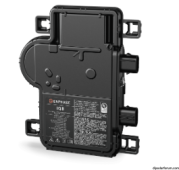Hmm so if they removed the configuration does that mean there is no control at all on the XW side, and any tuning has to be done on the inverter side? Does it perhaps use the grid profile set on the XW as the frequency shift limits? As a zero export battery inverter not participating in assisting grid I don’t think XW needs to comply with any F-W function.
I re-installed the latest firmware for the InsightHome gateway and can modify the grid profile properties as shown in the AC coupling guide and the latest XW manual.
Changed p(f) PreDisp to a 10 point non-linear curve starting at 60.1 and stopping at 62 Hz. Also changed response delay from 1 sec to 0. Big difference in AC coupling. The single IQ8+ inverter test at 300W with no load runs fine for any SOC from 90% to 98%, not much difference. At 61 Hz the IQ8+ shuts off and it always restarts after 5 minutes. I do see slightly higher shut-down frequencies with higher SOC, nothing significant.
SOC is not an absolute measure, SOC of 90% for a 5 kWh battery leaves 500 Wh for charging, while SOC = 98% for a 50 kWh battery allows 1000 Wh charge reserve.
There are properties in the MODBUS specs for power gradient over time, but I have not found them yet in the InsightLocal GUI,.
Would be great to specify FW power curtailment over time.
What is missing is a definable SOC hysteresis, it is 1%, causing frequent "nuisance" cycling.
Planning to test power curtailment tied to battery voltage, there is a definable hysteresis for the on/off curtailment voltage.








